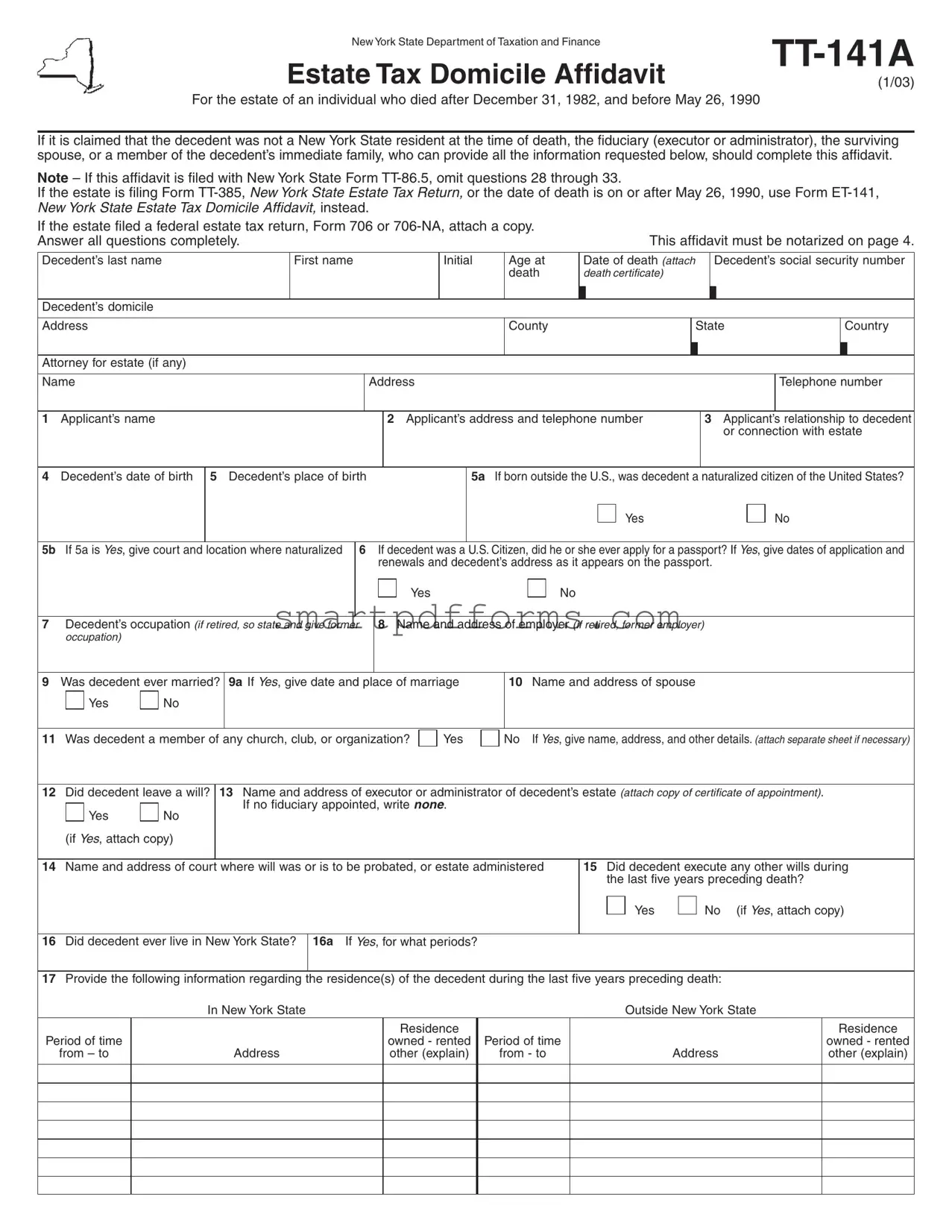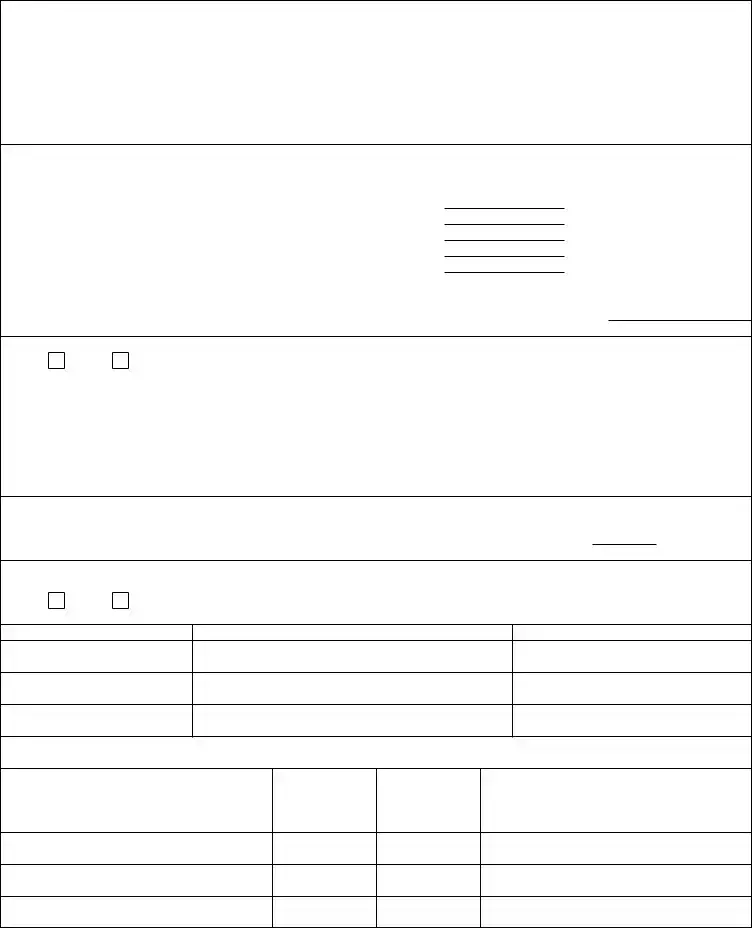What is Form TT-141A and when is it applicable?
Form TT-141A, known as the Estate Tax Domicile Affidavit, is a document provided by the New York State Department of Taxation and Finance. It's designed for estates of individuals who passed away after December 31, 1982, and before May 26, 1990. This form is specifically used when it's claimed that the decedent was not a resident of New York State at the time of their death. The affidavit should be completed by the fiduciary (executor or administrator), the surviving spouse, or a member of the decedent’s immediate family, provided they can supply all the requested information.
Who needs to complete Form TT-141A?
The Estate Tax Domicile Affidavit must be filled out by an individual closely related to the decedent, such as the fiduciary (executor or administrator) of the estate, the surviving spouse, or a member of the decedent’s immediate family. The person completing this form should be able to provide comprehensive details about the decedent’s domicile and prove that the decedent was not a resident of New York State at their time of death.
Are there any attachments required with Form TT-141A?
Yes, when filing Form TT-141A, it's necessary to attach a copy of the decedent’s death certificate. Additionally, if the estate filed a federal estate tax return, either Form 706 or Form 706-NA, a copy of the appropriate form should also be included. Furthermore, if there are documents such as trusts, indentures, deeds, mortgages, or leases detailing the decedent’s residence in the last five years, copies of these should be attached as well.
What should be done if the affidavit is filed with New York State Form TT-86.5?
If the affidavit is filed alongside New York State Form TT-86.5, it's important to skip questions 28 through 33 on Form TT-141A. This is because those specific queries are not applicable when filing with Form TT-86.5, which has its own set of requirements and instructions for completion.
How is Form TT-141A notarized?
The affidavit must be notarized to be considered complete and valid. This involves signing the document in the presence of a Notary Public, Commissioner of Deeds, or an Authorized New York State Department of Taxation and Finance employee on the designated page of the form. If the affidavit is sworn to in a foreign country, an authentication certificate must be attached. The act of notarization helps verify the identity of the signatory and adds a level of legal authenticity to the affidavit.



